Holding your newborn
New parents, particularly
first-timers, sometimes worry about picking their baby up or carrying
them properly. However, newborn babies are not as fragile as you think.
Although of course you still need to be careful when handling your baby,
it's best to trust in your ability. The more you practice, the easier
it will become and you will find that your confidence will soon grow
with experience. The main point to remember is that babies need to be
supported at the head and lower body since their muscle tone is not
developed enough to support themselves. The same principle applies if
you are cradling your baby, holding your baby upright over your
shoulder, or sitting him on your lap. Once you have been shown the
technique by your nurse, you might want to practice without being
watched.
Support the back of the head when lifting.
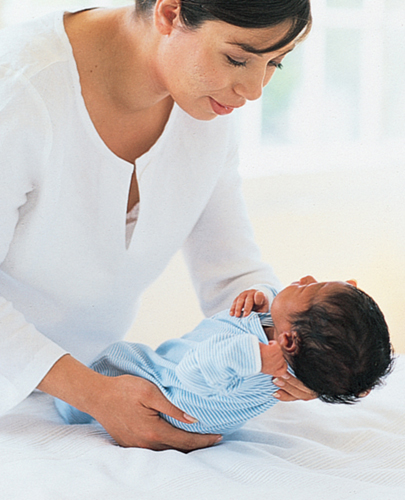
Holding him face down is comfortable for your baby.
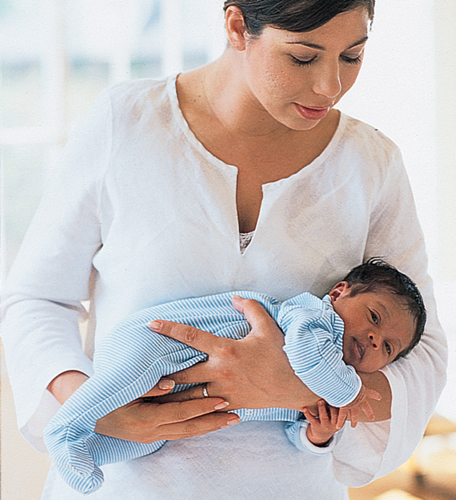
Cradling your baby in your arms allows you to keep his head supported and enables you to make eye contact.
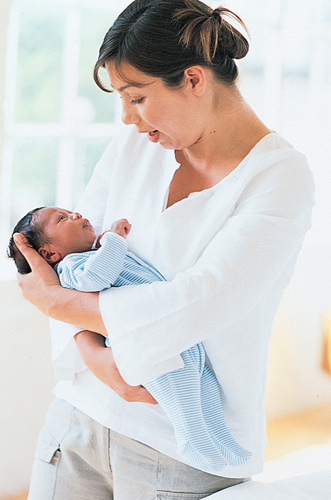
Diaper changing
Although you may feel a bit
hesitant at first about changing your baby's diapers, and many babies
protest strongly when having their diaper changed, you will soon master
the technique and learn how to change his diaper quickly and with the
minimum of fuss. The key to successful and stress-free changing is to
have everything ready before you start. Choose somewhere warm and
draft-free to change your baby; you may also want to lay down a towel on
top of the changing mat for extra comfort.
Cleaning the diaper area:
With damp cotton
pad pieces, clean around the genitals and in between the leg creases.
Wipe from front to back with girls. Dry the area and apply a barrier
cream if necessary.
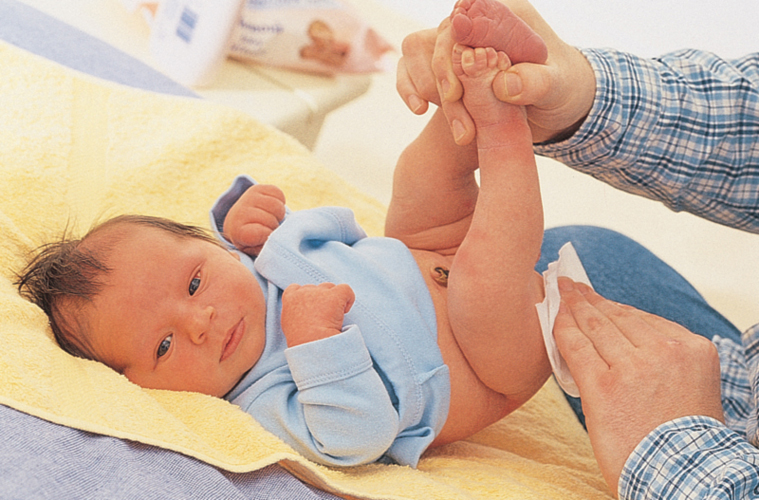
Putting on a diaper:
Slide the diaper under
your baby's bottom and then bring the front up between the legs. Bring
the sides over and fasten the tabs. Wash your hands before and after
diaper changing.
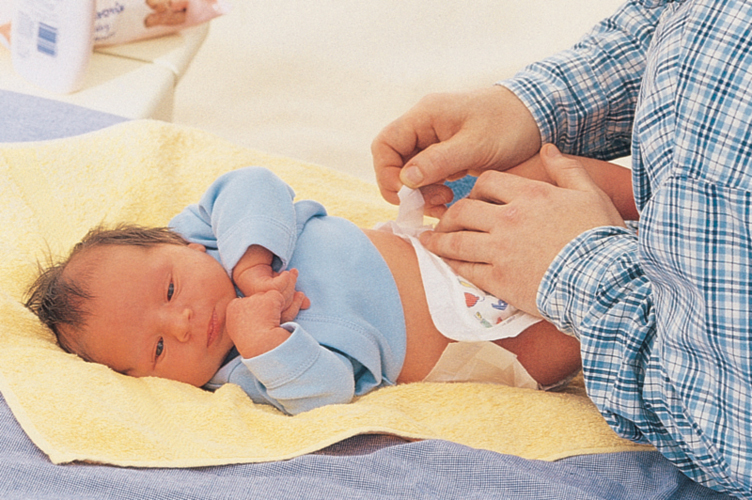
Dressing and undressing
Your baby is likely to
wear onesies and bodysuits. Choose onesies with envelope necks that are
easy to get on and off and opt for bodysuits with front-opening snaps.
Changing your baby's clothes:
In general, clothes should be changed just morning and night, and if any soiling occurs in between.

Lie your baby
down. Put the onesie on by holding the neck opening wide and gathering
the rest of the onesie. Gently lift the back of his head and ease the
back of the onesie behind his head. Lift the front over the head,
avoiding his face. Gently lift the sleeve down over the hand and arm,
stretching the onesie rather than pulling your baby's arm.
Lay
the bodysuit out with the snaps undone. Place your baby on top, then
gently insert his legs, then his arms into the suit and do up the snaps.
What does swaddling mean?
Swaddling is an old
practice of wrapping a baby snugly in cloths or blankets so that
movement of the limbs is restricted. Many nurses swaddle infants soon
after birth and it is now a standard care practice in many birthing
centers. Research has found that swaddling may help newborns to sleep
since it prevents the startle or “moro” reflex, which is the tendency
for newborns to startle themselves by moving their arms suddenly.
Folding:
Fold the blanket's corner. Lay the baby with his head above the edge. Fold the side over his arms.

Taking up the bottom:
Take the bottom corner up to his chest and tuck it underneath the top edge.

The left-hand side:
Bring the left side of the blanket across your baby and tuck it underneath him.
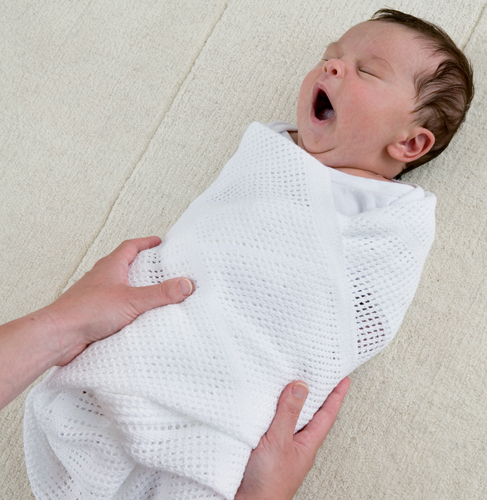
NOTE
Dads need to be assertive with baby care. Don't worry if you feel all fingers and thumbs at first—it will soon be second nature
NOTE
Distract your baby to keep him happy while dressing and undressing him—put some music on and talk to him constantly